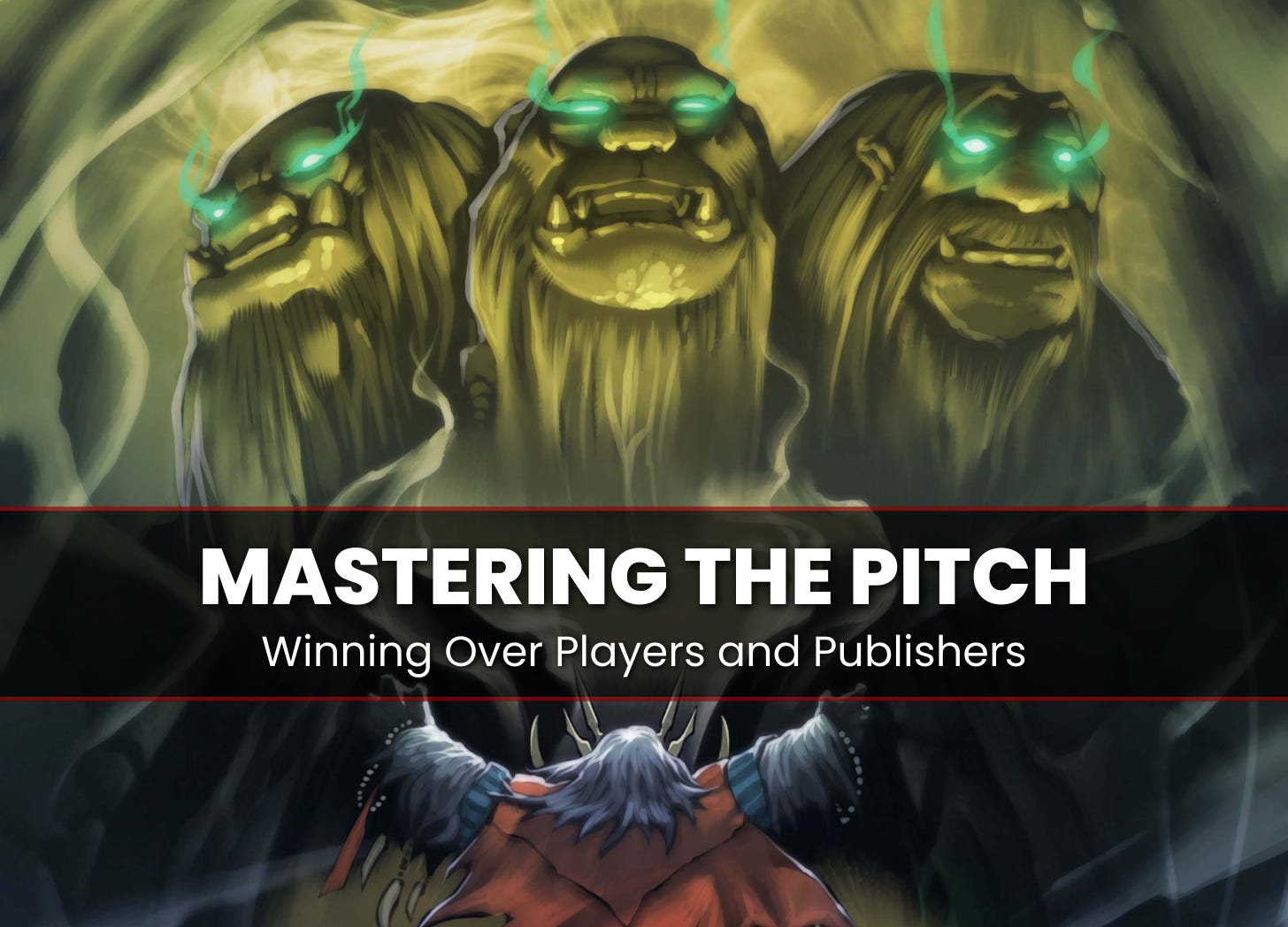This is the third issue of The Designer, a brand-new Newsletter for paid subscribers. In addition to more comprehensive design lessons, issues of this newsletter may feature educational videos, interactive assignments, supporting content from the podcast, and other unique posts.
If you’re a paid subscriber, enjoy this article in its entirety!
If you’re a free subscriber, this is a preview of this new and exciting newsletter!
Paid subscriptions allow me to invest more time into the podcasts and newsletters while keeping much of it free to the public. If you feel these newsletters and podcasts inspire, entertain, or inform you, I hope you consider a paid subscription.
Navigating the tabletop games industry requires more than a great game; it's about understanding the art of pitching and publishing. Whether you aim to catch a publisher's eye or make your game stand out at a convention, the journey from concept to successful publication will be challenging.
Note: This article only covers getting your game into a publisher’s hands; it does not cover self-publishing or crowdfunding—more on those in future articles!
Preparing yourself and your game for a pitch
As a designer, attracting playtesters is essential not only for feedback but also to hone your pitching skills. Communicating your game's unique appeal can be challenging, but it’s a skill that’s essential if you want to get it into a publisher’s hands.
This alone may be too much for a particularly introverted person, leaving you with two options: Push yourself to approach strangers who might be interested in a demo or bring a friend who will help you draw strangers to your game, where you can then pitch them on a demo.
When presenting your game to potential playtesters, particularly in environments like conventions where numerous games compete for attention, you have a short window—usually less than a minute—to hook them. In these moments, your pitch must be compelling enough to pique someone’s interest before they wander off toward the next shiny thing. Making the most of this chance to present your game is vital, as it allows you to gauge what aspects resonate with players and which need refinement.
Your pitching technique should be tailored to your audience's interests and cater to their preferences. Remember, each interaction with a potential playtester is an opportunity to refine your pitch, which may ultimately lead to you getting the game published. Here are some tips on what elements to pay attention to during these playtest-pitches:
Pay attention to nonverbal cues. You likely already have an eye for some, and you’ll pick up others with experience. These cues can reveal what the person is most interested in and what parts of the game you should focus on. If they are engaging with the prototype, you can talk about the unique components, show them a fun interaction in the game, or invite them in with a relevant story.
Ask questions about their interests in gaming. This helps you understand what kind of games they enjoy and which elements of your game appeal to them. For example, if they like Slay the Spire, you can draw parallels between that game and your own and show them how your game offers a similar experience in a tabletop setting. Getting to know people not only lets you tailor your pitch to them but also lets you know when your game may not be the right fit for that person. Knowing who your game is not for is almost as important as knowing who it is for. You show respect to your potential customers when you honor their time and only try to sell them games you believe they will genuinely love.
Create, practice, and refine a canned elevator pitch that covers the key elements of your game in less than one minute. Practice your pitch with family, friends, and strangers at game stores and cons to see what works and what doesn't. It's important to be enthusiastic and passionate about your game when you pitch it. Focus on what’s emotionally relevant until the potential player is hooked. Then, you can talk about the technical aspects. Jumping right into deep technicalities can cause a potential playtester to zone out. The big takeaway here is this: If you don't believe in your game, why should they? Learn to distill that answer into a 1-minute or less pitch. Once they are hooked, you have much more leeway to get into the details.
Keep reading with a 7-day free trial
Subscribe to Think Like A Game Designer to keep reading this post and get 7 days of free access to the full post archives.



